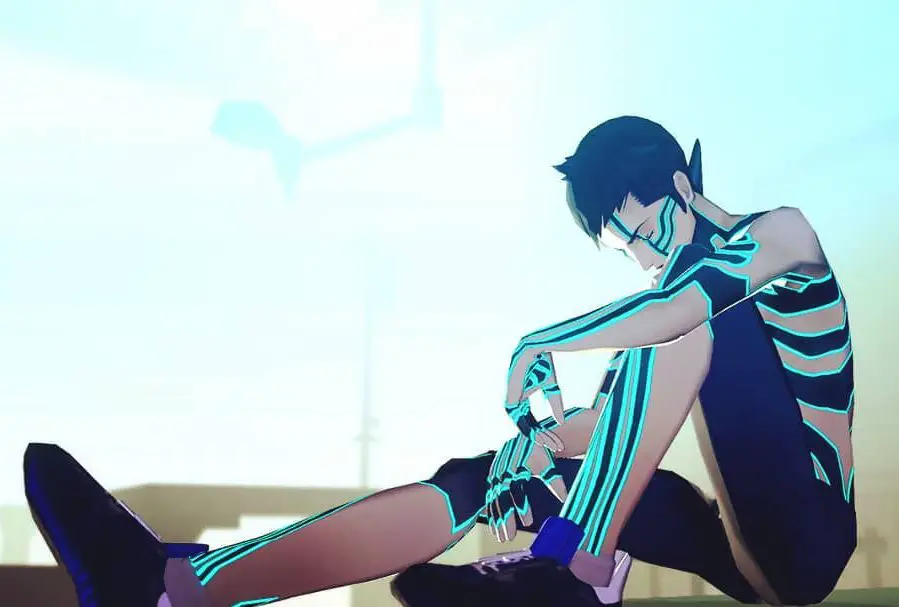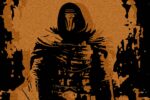The genres of survival-horror and JRPG (Japanese Role-Playing Game) have garnered significant popularity in the gaming industry for years. Despite this, few games have attempted to combine them into a single experience. PlayStation era titles such as the cult-classics Parasite Eve and Koudelka tried this hybrid by combining JRPG style gameplay and storytelling with the presentation of survival-horror classics like Resident Evil and Silent Hill. However, Shin Megami Tensei 3: Nocturne offers a different approach to this mixture by fully embracing its JRPG identity while subverting the genre’s tropes to form an unconventional horror style.
Desolation in Presentation
Shin Megami Tensei 3: Nocturne sets its story in the aftermath of the “conception,” an apocalyptic event that reduces most of the world to a demon-infested wasteland. Throughout the game, the protagonist traverses the ruins of Tokyo in search of the last surviving humans. As his travels progress, the protagonist gradually unveils the reasons for the “conception” and humanity’s role in an inevitable war between demonic factions.
Nocturne’s excellent environments add to its unnerving premise. Early areas of the game resemble everyday locations like hospitals and shopping malls. However, their maze-like layout and absence of life make exploration an isolating and disorienting experience. Subtle clues toward unseen events, such as scattered papers or doorways blockaded with furniture, serve as haunting reminders of the lost lives that once inhabited the empty corridors. Later parts of the game capitalize on these feelings while introducing foreign settings with new challenges, such as a pitch-black tunnel system that forces players to memorize its layout while avoiding traps and enemies.
Even more notable than the environments are Nocturne’s many varied character designs. Demons’ appearances range from traditional horned beasts and skeletal warriors to less fearsome fairies and cartoonish snowmen. The inclusion of the latter’s presence interestingly allows the more monstrous creatures to stand apart from other enemies.
Despite Nocturne’s emphasis on the threatening nature of its demons, few are as intimidating as its human characters. Series artist Kazuma Kaneko presents the game’s humans and human-like demons with pale skin and vacant eyes, resulting in characters who resemble porcelain dolls more so than people. Aside from adding to the game’s already sinister atmosphere, these designs allow the human characters to blend into the rest of the game’s demonic aesthetic, hinting toward their darker intentions revealed later in the story.
Defining Gameplay Through Tension and Stakes
Death in Shin Megami Tensei 3: Nocturne can potentially undo hours of progress, making exploration highly risky yet necessary to advance in the game. The seemingly empty buildings become terrifying upon realizing that invisible threats haunt their hallways. With a few exceptions, Nocturne’s enemies never appear physically outside of combat. Instead, the player’s compass doubles as a radar for detecting foes. The radar rapidly blinks red as the enemy advances, forcing the player into a battle. While random encounters are a staple of the JRPG genre, the inescapable warning transforms the trope into Nocturne’s most stressful mechanic.
While Nocturne builds fear from its setting and presentation, the game’s punishing combat serves as the true foundation of its horror. Like most JRPGs, Nocturne uses “turn-based combat,” with the player and enemy parties taking turns attacking and using items. Nocturne augments this classic format with their “press turn system.” Press turn allows players to gain more consecutive turns by exploiting an enemy’s elemental weaknesses with special attacks. However, enemies can also use this system against the player, making even the weakest demons a credible threat.
During battles, players can also recruit enemies through negotiations. After using a turn to begin a conversation, the player may answer a demon’s questions or provide specific items. As with most elements of Shin Megami Tensei 3: Nocturne, negotiation involves multiple risks. Even if the player satisfies an enemy’s requests, the demon may still decide against joining the player and run away with the requested items. Furthermore, some demons will be unable to talk or deny the player’s attempts at negotiation, thereby wasting a turn. As a result, every attempt at negotiation must be approached with caution, as the player can easily lose valuable items or render themselves vulnerable during battles.
On their own, these aspects of gameplay create an engaging challenge but do little to create scares. However, the frequency of battles and scarcity of items will quickly drive players to fear every encounter. Nocturne ultimately transforms its JRPG mechanics into a survival-horror game by emphasizing resource management and the player’s vulnerability.
Nocturne’s original soundtrack plays a significant role in adding tension to its gameplay. The battle theme changes in different areas, with the instrumentation of each song reflecting the strength of that region’s enemies. When battling the weakest demons, a fast-paced guitar and light percussion signify a (mostly) guaranteed win. Against regular enemies, inhuman vocals and synths accompany the instruments to create a track that’s as fearsome as it is triumphant, presenting the player with an enemy on equal footing. In fights against the “fiends,” some of the game’s strongest foes, these instruments are abandoned to focus instead on an energetic synth and backing organ, instilling the player with a sense of dread. These are only a few examples of Nocturne’s intense yet atmospheric soundtrack, but they reinforce the game’s masterful ability to draw fear from every possible element.
Long-Term Unpredictability
Shin Megami Tensei 3: Nocturne works best as a horror game during its introductory hours. The game lacks tutorials and relies on the player being unfamiliar with its mechanics, making the first time a demon scams the player in negotiation or exploits the press turn system a truly stress-inducing moment. However, a single-playthrough of the game will take over 40 hours to complete, meaning players will likely grow accustomed to Nocturne’s initial horror elements long before concluding. Still, the game’s second half succeeds in maintaining its fear and tension by breaking many of its own rules.
Nocturne’s early fights act as a duel between players and enemies of equal capabilities. Despite this, inexperienced players may feel like they’re at a disadvantage due to the enemy’s aggressive tactics. However, given enough time players can master the game’s mechanics and recruit multiple powerful demons into their party. To compensate, powerful enemies later in the game possess distinct abilities that force the player to reapproach combat. Some enemies can gain extra turns without attacking the player, while others can suddenly remove party members from the battle. The game’s optional fights have similarly surprising gimmicks. One enemy is nearly impossible to defeat unless the player begins the battle under specific circumstances, while another chases and attacks the player outside of combat. These moments transform the player’s once perceived differences in capability into true uphill battles.
By constantly introducing new surprises and challenges, Nocturne creates a style of horror that enthralls players throughout the entirety of its lengthy campaign. Although the original PlayStation 2 version could seem unwelcoming to new players, the remaster adds a new difficulty option designed for more casual players, making it a fantastic entry point into the long-running Megami Tensei series. In short, Shin Megami Tensei 3: Nocturne is a remarkable horror and JRPG title that fans of either genre are sure to enjoy.

















